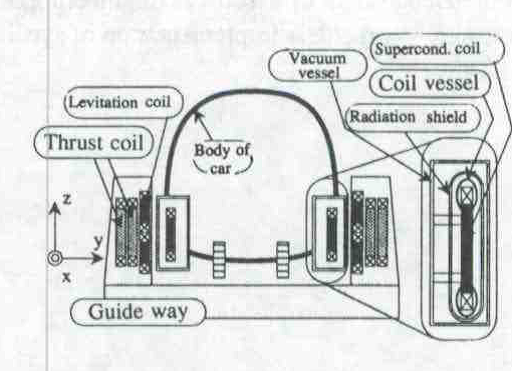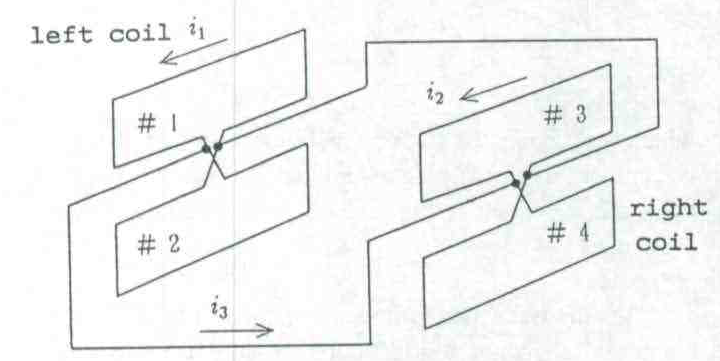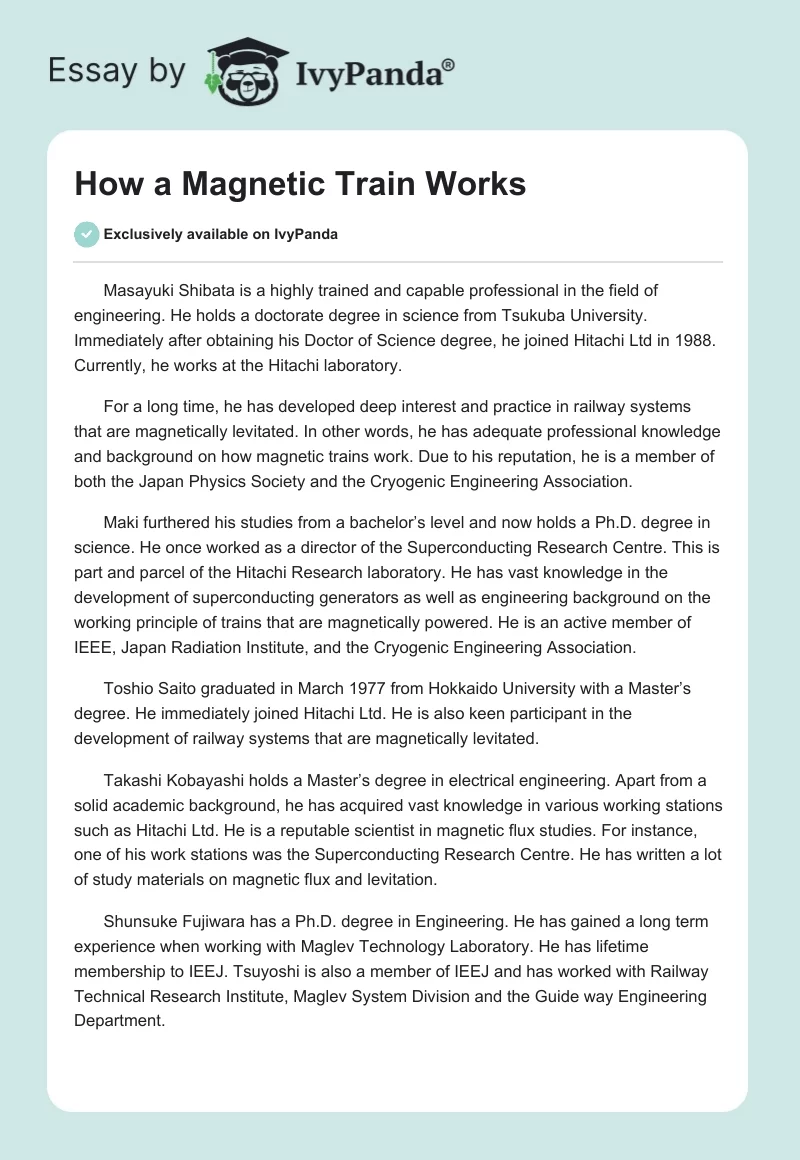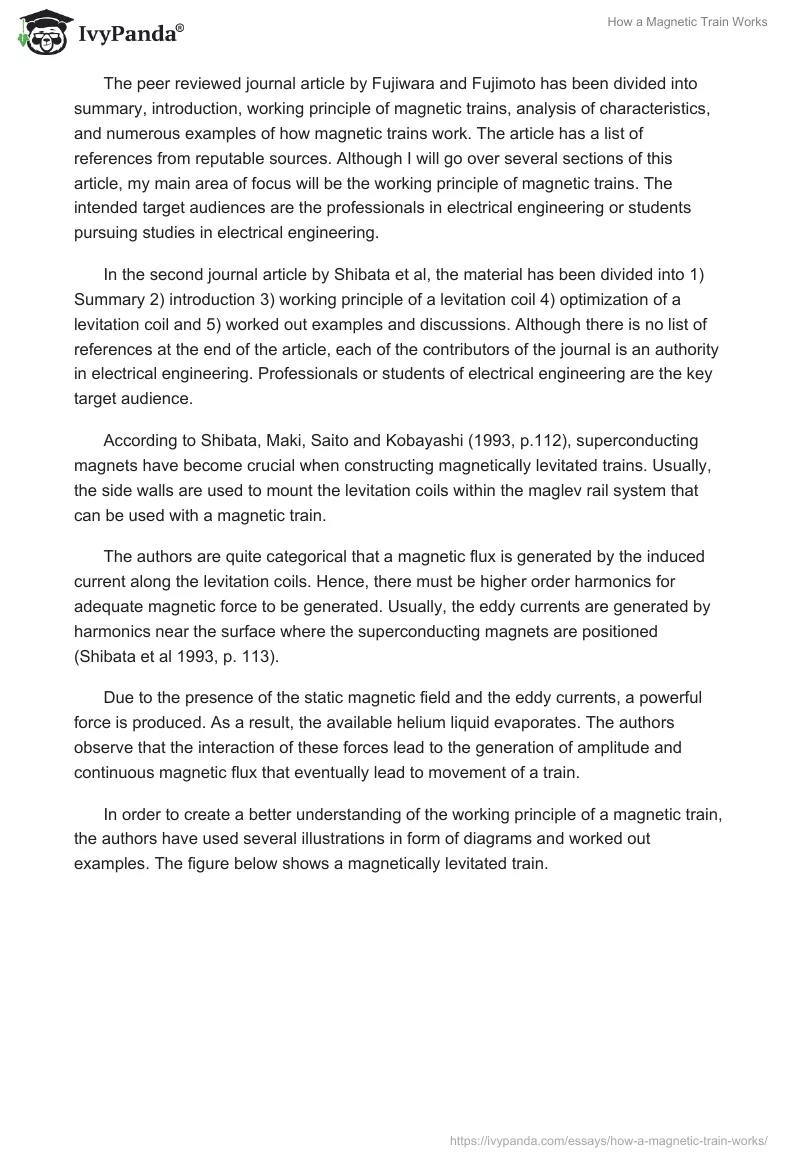Masayuki Shibata is a highly trained and capable professional in the field of engineering. He holds a doctorate degree in science from Tsukuba University. Immediately after obtaining his Doctor of Science degree, he joined Hitachi Ltd in 1988. Currently, he works at the Hitachi laboratory.
For a long time, he has developed deep interest and practice in railway systems that are magnetically levitated. In other words, he has adequate professional knowledge and background on how magnetic trains work. Due to his reputation, he is a member of both the Japan Physics Society and the Cryogenic Engineering Association.
Maki furthered his studies from a bachelor’s level and now holds a Ph.D. degree in science. He once worked as a director of the Superconducting Research Centre. This is part and parcel of the Hitachi Research laboratory. He has vast knowledge in the development of superconducting generators as well as engineering background on the working principle of trains that are magnetically powered. He is an active member of IEEE, Japan Radiation Institute, and the Cryogenic Engineering Association.
Toshio Saito graduated in March 1977 from Hokkaido University with a Master’s degree. He immediately joined Hitachi Ltd. He is also keen participant in the development of railway systems that are magnetically levitated.
Takashi Kobayashi holds a Master’s degree in electrical engineering. Apart from a solid academic background, he has acquired vast knowledge in various working stations such as Hitachi Ltd. He is a reputable scientist in magnetic flux studies. For instance, one of his work stations was the Superconducting Research Centre. He has written a lot of study materials on magnetic flux and levitation.
Shunsuke Fujiwara has a Ph.D. degree in Engineering. He has gained a long term experience when working with Maglev Technology Laboratory. He has lifetime membership to IEEJ. Tsuyoshi is also a member of IEEJ and has worked with Railway Technical Research Institute, Maglev System Division and the Guide way Engineering Department.
The peer reviewed journal article by Fujiwara and Fujimoto has been divided into summary, introduction, working principle of magnetic trains, analysis of characteristics, and numerous examples of how magnetic trains work. The article has a list of references from reputable sources. Although I will go over several sections of this article, my main area of focus will be the working principle of magnetic trains. The intended target audiences are the professionals in electrical engineering or students pursuing studies in electrical engineering.
In the second journal article by Shibata et al, the material has been divided into 1) Summary 2) introduction 3) working principle of a levitation coil 4) optimization of a levitation coil and 5) worked out examples and discussions. Although there is no list of references at the end of the article, each of the contributors of the journal is an authority in electrical engineering. Professionals or students of electrical engineering are the key target audience.
According to Shibata, Maki, Saito and Kobayashi (1993, p.112), superconducting magnets have become crucial when constructing magnetically levitated trains. Usually, the side walls are used to mount the levitation coils within the maglev rail system that can be used with a magnetic train.
The authors are quite categorical that a magnetic flux is generated by the induced current along the levitation coils. Hence, there must be higher order harmonics for adequate magnetic force to be generated. Usually, the eddy currents are generated by harmonics near the surface where the superconducting magnets are positioned (Shibata et al 1993, p. 113).
Due to the presence of the static magnetic field and the eddy currents, a powerful force is produced. As a result, the available helium liquid evaporates. The authors observe that the interaction of these forces lead to the generation of amplitude and continuous magnetic flux that eventually lead to movement of a train.
In order to create a better understanding of the working principle of a magnetic train, the authors have used several illustrations in form of diagrams and worked out examples. The figure below shows a magnetically levitated train.

Source: (Shibata et al 1993, p. 112)
From the above diagram, it can be seen that the guide way is electronically manned by the thrust coil, levitation coil, superconductor coil and the coil vessel. Guidance and levitation of the magnetic train is made possible by the fundamental flux which is produced by the harmonic flux and ground coils (Shibata et al 1993, p. 115).
On the same note, Fujiwara and Fujimoto present a working principle of a magnetic train that makes use of both the guiding scheme and levitation (Fujiwara & Fujimoto 1993, p.124). The figure below shows how the ground coils are connected parallel to each other.

Source: Fujiwara & Fujimoto (1993, p.124)
The working principle is the same although there are slight modifications. For example, the EDS maglev vehicle is adjusted in such a way that the magnetic drag force is significantly reduced. There are two rectangular unit coils that make up the levitation coil. These rectangular coils prevent any induction of electric current around the levitation coil. Hence, the guidance and levitation functions are performed by both the left and right coils (Fujiwara & Fujimoto 1993, p.128).
References
Fujiwara, S. & Fujimoto, T 1993, “Characteristics of Combined Levitation and Guidance EDS Maglev System.” Electrical Engineering in Japan, vol. 113 no. 3, pp, 123-134.
Shibata, M., Maki, N., Saito, T. & Kobayashi, T 1993, “Levitation Coil length Optimization of a magnetically Levitation Train.” Electrical Engineering in Japan, vol. 113 no. 2, pp. 112-121.


